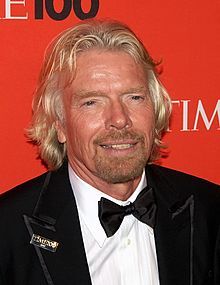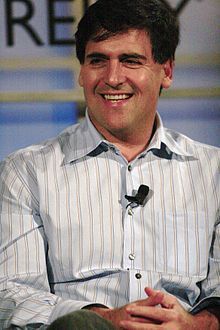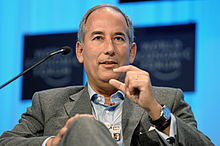Does your CEO have a blog? If he doesn’t, he should. You can’t run a business in today’s world from the cushy safety of your office — you have to get out there and make connections in person, or, failing that, by social media proxy. In fact, Forrester Research Chief Executive Officer, George Colony says that “within 15 years CEOs will need to know the ins and outs of new media, social network technologies and social communities before they get the job.”
With that in mind, we thought we’d take a peek at a few of the CEOs who already have a thriving social media presence. Bonus points, of course, for anyone who obviously writes their own posts, tweets, and updates.

1. Richard Branson, Founder and Chairman of Virigin Group
Fittingly, Sir Richard Branson’s blog page is a more of a front door into his media presence, with videos, links to his Twitter, Facebook, and Google+ accounts, and yes, blog posts on everything from science and technology to the beauty of Mt. Kilimanjaro. If you’re a budding entrepreneur, it’s worth following Branson on one or all of his outlets. He’s famous for pulling stunts like offering a chance to meet with him, in exchange for charity donations.

2. Mark Cuban, owner, Dallas Mavericks
It’d be easier to talk about what Mark Cuban doesn’t do, but here’s a partial CV: he’s the owner of the Dallas Mavericks, one of the titular sharks on Shark Tank, co-owner of Landmark Theatres, a best-selling author — and, pretty clearly, the voice behind his aptly named blog, Blog Maverick. Like most of us, Cuban wastes little time on formatting and spacing issues, and shoots straight from the hip. If you want to know what he thinks about YouTube on mobile, Facebook advertising, or the Mavericks’ new uniforms, his blog is the place.

3. Tony Hsieh, CEO of Zappos, and Chris Nielsen, COO of Zappos
Zappos, the little shoe company that could (and did) change our attitude toward free returns, features a blog co-written by its CEO, Tony Hsieh and COO, Chris Nielsen. While some of the introductions are a little on the nose (e.g., “here’s an email that went out yesterday”), the text itself is offers a fascinating look at what it’s like to work at the company that ChiefExecutive.net called “insanely customer-focused.” To see what we mean, take a look at the memo that went out when Amazon bought Zappos. Sample paragraph:
Over the next few days, you will probably read headlines that say “Amazon acquires Zappos” or “Zappos sells to Amazon”. While those headlines are technically correct, they don’t really properly convey the spirit of the transaction. (I personally would prefer the headline “Zappos and Amazon sitting in a tree.”)

4. Tom Glocer, former CEO of Reuters
Glocer’s blog very clearly says, right at the top, that it’s his personal blog, and now that he’s no longer the CEO of Reuters, he can express himself without having to worry about stepping on toes at the office (or on Wall Street). The best thing about his blog is that it really feels like a behind-the-scenes peek into a life most of us can only barely imagine. This is a guy who can comment on Margaret Thatcher in personal terms, discuss the difficulties of commenting on new banking legislation in a manner reminiscent of most people talking about going to the DMV — heck, this is a man who can actually afford to send two kids to private school in New York. His life is clearly way outside our realm of experience, but his friendly tone makes his blog feel like an email from a (very literate) friend.

5. Craig Newmark, founder of Craiglist
Newmark is worth almost $400 million, but you’d never know it from his humble demeanor on his inspiring blog, Craig Connects, the slogan of which is “Using technology to give the voiceless a real voice and the powerless real power.” Recent posts highlighted causes ranging from Leave No Veteran Behind to a push to bring high-speed internet to vocational schools in Palestine. Posts typically begin with salutations like, “Hey there, folks!” It’s basically like what would happen if your nicest friend got stinking rich.
Images: Wikipedia